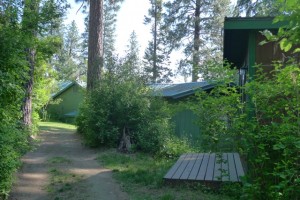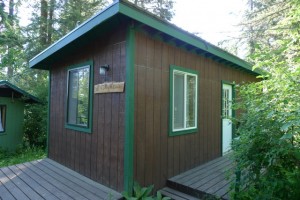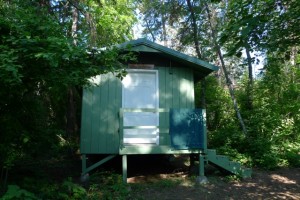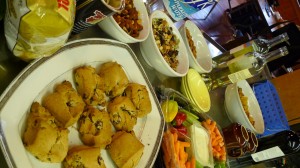This is how you know you live out in country.
First, you get beautiful rainbows over the gorgeous forest.
Then you have thoughts like this:
Pots of gold and leprechauns, my ass.
There’s a gold bulldozer at the end of the rainbow.
This is how you know you live out in country.
First, you get beautiful rainbows over the gorgeous forest.
Then you have thoughts like this:
Pots of gold and leprechauns, my ass.
There’s a gold bulldozer at the end of the rainbow.
Is there something in the water? This is in response to the op-ed piece Parents must consider disadvantages before home schooling from THE OLYMPIAN, June 12, 2009
Public schooling has become an attractive alternative to homeschool or private school. Parents feel they will be giving their children a better education by sending them to government run public schools.
For many, public schooling is a poor choice because the schools fail to provide an atmosphere that is truly conducive to learning. Parents do not take into consideration the irreversible injustice they can place upon their children by sending them to a public school. There are significant disadvantages to public schooling which outweigh the benefits. After having direct contact with at least five people who have been public schooled, I have been able to identify some serious disadvantages to public schooling.
And, after consulting with employers, public and private school teachers, college instructors, church leaders and a host of other professionals, I found that my findings about public schooling are not uncommon.
According to the professionals I interviewed, it is easy to identify those individuals who have been in a pubic school environment.
Some of the most significant disadvantages to public schooling are cost, time, teachers’ inability to instruct, inability to socialize with anyone outside their age group, interpersonal skills, communication skills and being overprotected from the real world outside the school walls.
One disadvantage is the financial burden or hardship it can impose upon a community. It is the responsibility of the taxpayers to purchase the curriculum needed for public schooling where the homeschool provides it at no charge to the tax payer.
This means communities must purchase books, materials, computer software and other resources in order to teach the lessons. Taxpayers must fund all field trips, outings or special activities. Often, one of the parents must give up parenting so the children can be in public school. The loss of an engaged parent in the household can be detrimental. This can be a significant disadvantage and it can disrupt the harmony of the home.
Another disadvantage to public schooling is the amount of time it drains from family.
Many parents don’t realize the time constraints involved with sending their children to public school. Public school can be emotionally and physically draining, leaving the children little time or energy to engage with their families, communities, or the world.
A parent must be motivated and exercise laser focus if their children attend public school. It can be very challenging to follow an arbitrary schedule, set by the school, that the children as well as the parents must follow. It becomes even more challenging when parents try to balance everyday chores with public schooling.
It has been my finding that a large number of teachers are not equipped to be public school instructors. While many teachers have formal training, they lack discipline, or lack organization skills. Without structure and consistency, children can be easily distracted.
Children in public school not only have the time and space in school for study, but the school often demands that they should have an area in the home specifically dedicated to schooling. Most of the time, there is not a set routine. Teachers assign arbitrary, and increasingly time-consuming, amounts of homework that eat into the family’s time. In public school, children must report to school at a certain time and their day is mapped out. They are unable to deviate from that schedule, even when they have a deeper interest in a particular subject.
The lack of parents in a public school can be a serious disadvantage. Sometimes, children have issues or concerns that they don’t feel comfortable talking to a strange counselor, guide, or mentor about. In public schools, students cannot choose to deal with their issues with their parents in a safe and loving environment; they must wait until after school hours, bottling in their fears, anger, or sadness. Public school children don’t have their parents to talk to and provide support. It is important for children to have family they can confide in when necessary.
The biggest disadvantage to public schooling is the child’s lack of socialization which does not provide them the opportunity to interact with anyone other than other children their same age. For some children, especially children in early years, this can affect their development of social skills. It can also hamper interpersonal and communication skills. This will result in children feeling isolated, passive, lethargic and alone or ill-equipped to handle situations where interaction with people of other ages is required.
There is research that states that the self-esteem and confidence of children who have been public schooled is lower than those in private or home schools. Public educators often overprotect their charges from the real world.
Every parent who is considering public schooling should consider the disadvantages I have outlined. If you are unhappy with home schooling or your private school, public school might be a viable option, but it might not be the right solution. I encourage parents to talk to other parents who are public schooling or have public schooled. You should find out all the pros and cons before making a decision that will likely have an adverse effect on your child’s life.
Yesterday:
Moved 192 blocks, at 42.5 lbs each (19kg), that’s 8,160 pounds (3,648 kg) . . . or 4 tons.
Of concrete block. (288 total).
Today:
Stacked 144 blocks for the last three rows.
Although it would have been rather humorous, I do not have any pictures of me trying to get back out of the center. My jeans were sticking to my thighs (sweaty), and I was having a hard time lifting my right leg over the wall with my jeans binding. (And I even left four blocks out of the way, so I was theoretically only vaulting five rows. (5 rows at 8″ each is 40″ wall, plus the foundation, plus uneven ground inside. My inseam is a nominal 29″ . . . I’m just glad the whole thing didn’t tumble down the outside with me).
Camp Cross is an Episcopal camp on over 100 acres on a peninsula on Lake Coeur d’Alene.
Although back in “the day” they used to march campers around the marsh land (lugging all their gear!), it is now reachable by boat from Loff’s Bay.
There’s a beautiful paved path up to the main meeting halls.

And well-appointed cabins (bathroom included in Olympus) just steps away (47–I counted) from the meeting halls.

(On the right is Olympus; Wells Hall (dining and meeting facility) is in the background, at the end of the path to the left. The middle building is a counselor storage building).

We used both Olympus and St. Helena.

A little off the beaten (er, paved) path

you might find a labyrinth

or a place to gather around a fire

but everywhere you go around camp is beautiful

My young friend, the middle daughter of the Baldwini Clan, had a letter published on the 9th in our local paper, the Spokesman Review yesterday, wherein she lobbies for the public pools to be public and free.
Camp Cross is beautiful in early June. The air is crisp and clear, the bugs aren’t yet frisky and vengeful, the sun is beautiful but not oppressive, and a group like ours has the camp to ourselves.
We did wait a little too late in the day, and had a brisk, but very pleasant, boat ride.
Apparently, I was too busy cooking most of the food to photograph it, but I did get one of the snacks we had Saturday between brunch and dinner.

More on Camp Cross tomorrow.
Sometimes, Farmerteen does some really random stuff.
While I was packing things to go on the First Annual Crafting Retreat, she presented me with a mystery can.
She didn’t want me to open the can, or even necessarily guess what was in the can (her soliloquy on the cupboard’s soon-to-be tomato soup deficit rather pointed to the contents of the mystery can) . . . she just wanted to cover it. I think she had this internal fantasy about going through the cupboard and similarly covering all the cans, so that dinner might always be an adventure. But she didn’t really say that, either.
Instead, she just shrugged and grinned.
For myself, I just wanted to use the words soliloquy and tomato soup in the same sentence . . . I have no idea where she gets it from.
Probably her father.
Brie and Sausage Breakfast Casserole
Adapted from Rock Cottage Gardens
8 oz brie cheese
1 lb Jimmy Dean’s sage sausage, ground
6 slices good, firm, wheat bread, cubed
1 cup parmesan cheese, grated
7 large eggs, divided (5 eggs and 2 eggs)
3 cups whipping cream, divided (2 cups and 1 cup)
2 cups fat-free milk
1 tsp dry mustard
Green onion, chopped for garnish
Trim and discard rind from top of Brie. Cut cheese into cubes; set aside. Cook sausage in a large skillet over medium-high heat, stirring until crumbled and no longer pink; drain well.
Cube bread and place evenly in bottom of a lightly greased 13 X 9- inch baking dish. Layer evenly with bread slices, sausage, Brie, and grated Parmesan cheese.
Whisk together 5 eggs, 2 cups whipping cream, milk, and mustard; pour evenly over casserole.
Cover and chill 8 hours.
Immediately before baking:
Whisk together remaining 2 eggs and 1 cup whipping cream; pour evenly over chilled mixture.
Bake at 350 degrees for 50 minutes or until set. I’ve never had it set completely in 50 minutes.
It will brown on top. Garnish with the green onion and serve with fruit.
Fruited Irish Oatmeal (Choline-enriched version below)
5 c water
2 c steel-cut oats
1 c apple juice
1/4 c dried cranberries
1/4 c snipped dried apricots
1/4 golden raisins
1/4 c maple syrup
1/2 t salt
1 t cinnamon
In a 3 1/2 or 4 qt slow cooker, combine all ingredients. Cover and then either cook on low for 6-7 hours or on high for 3-3 1/2 hours. Serve with extra dried fruit, brown sugar, pecans or walnuts, milk, etc
Jen’s fast-cook version for a full 5 qt. pot:
10 c very hot/boiling water
4 c steel-cut, quick-cook oats
2 c apple juice
1/2 c dried cranberries
1/2 c snipped dried apricots
1/2 golden raisins
1/2 c maple syrup
1 t salt
2 t cinnamon
Combine fruits, apple juice, syrup, salt, and cinnamon. Let set overnight, to plump fruits. One hour before serving, combine fruit mix, oats, and very hot water in 5 or 6 qt. slow cooker, and set on “high.”
Cook for 1 hour. I served it with heavy whipping cream.
Choline-Enriched version:
5 1/2 c water
2 c steel-cut oats
1/2 cup flax meal
1 c apple juice
1/4 c dried cranberries
1/4 c snipped dried apricots
1/4 golden raisins
1/4 c maple syrup
1/2 t salt
1 t cinnamon
In a 3 1/2 or 4 qt slow cooker, combine all ingredients. Cover and then either cook on low for 6-7 hours or on high for 3-3 1/2 hours. Serve with extra dried fruit, brown sugar, pecans or walnuts, milk, etc
Choline Granola
Adapted from Molly Wizenberg’s Daily Granola
Adapted from Nigella Lawson’s Feast
Dry ingredients:
5 cups rolled oats
2 cups raw peanuts
1 cup hulled raw sunflower seeds
1 cup sesame seeds
1 cup flax seeds
1/2 cup ground flax meal
¾ cup light brown sugar
2 tsp. ground cinnamon
1 tsp. salt
Wet ingredients:
¾ cup unsweetened apple sauce
1/3 cup brown rice syrup
¼ cup honey
1 large knob of ginger, grated
2 Tbsp. flax oil
Set racks in the upper and lower thirds of the oven. Preheat the oven to 300°F.
In a large bowl, combine all of the dry ingredients. Stir to mix well. In a small bowl, combine all of the wet ingredients. Stir to mix well. Pour the wet ingredients over the dry ones, and stir well.
Spread the mixture evenly on parchment-lined baking sheets.
Bake for 35 to 40 minutes, or until evenly golden brown, stirring occasionally, and changing the position of the baking shets every 10 minutes or so.